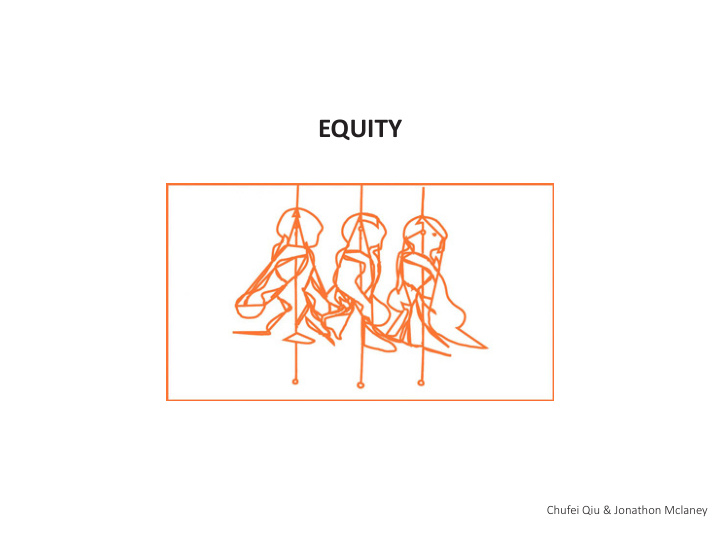



EQUITY Chufei Qiu & Jonathon Mclaney
EQUITY Building Community - Universal Business Ethics Exterior Access - Universal (ADA Standards) Access - Access to - Human Scale Nature & Place
BUILDING EUITY
ADA STANDARDS
JUST – ETHICAL BUSINESS PRACTICES Summary, In 2009, the Living Building Challenge launched its Equity Petal, the first time that a green building program explicitly addressed social justice, let alone made it a core part of a program. While Equity began to address issues of equal access, and accessibility, and rights to nature, the focus of the program did not go far enough to address the numerous and varied impacts on communities of people. Institute calls for all organizations to accept social responsibility and publicly declare and showcase their social justice and equity policies and practices. -Just. User Manual – ILFI
Goals of JUST program 1. To elevate the discussion around social justice in all organizations 2. To create a common language for social justice issues 3. To elevate the causes of those individuals who lead these issues 4. Change the practices of thousands of organizations worldwide 5. To make life better for people from all walks of life.
CASE STUDY ON UNIVERSAL DESIGN Promoting Equality While Preserving History At the University of Virginia Background The University of Virginia (UVA) is located in Charlottesville, VA. Founded in 1819, UVA was originally surveyed and sited by Thomas Jefferson in 1815. It was not until the 1980s that serious conservation of all of Jefferson’s buildings was undertaken. By this time, some of the deterioration required considerable investment. In the course of this construction, renovation, and conservation work, it also become necessary to consider the needs of students and visitors with disabilities . As a result, architectural barriers were to be removed wherever readily achievable, especially when construction or renovation was undertaken.
Modern ramp built adjacent to original shrubbery and stairs vs. Designing for the integration of historical details with modern accessibility technology resulted in more equitable use for all students. All the lift’s components, except the controls, were installed entirely below ground in an 8-foot pit. The photos above show that the floor of the lift is covered in brick identical to the surrounding walk, and the lift sides rise from the pit before the lift begins to rise. When not in use, the lift is entirely invisible.
COMMUNITY EUITY
SPATIAL EXCLUSION & WEALTH SEGREGATION Spikes in Parisian Doorway Brazilian Slum next to luxury apartment block
SHARING OF RESOURCES AND INCLUSIVE DESIGN
UNIVERSAL ACCESS - Access to public transportation - Access to public area (zone): parks, green space - Access to Opportunities and Daily Necessities Public transit, bicycle, and pedestrian networks can connect low- income residents to jobs and educational opportunities, save money on transportation, and help to integrate physical activity into peoples’ daily routines. Photo courtesy of EPA. The North City Farmers’ Market in Old North St. Louis provides free health screenings and healthy cooking demonstrations.
Regional and local planners are engaging low-income, minority, and tribal residents in decision-making and producing more enduring development that is better for people and the environment. Community groups, government agencies, and private and nonprofit partners are cleaning up and investing in existing neighborhoods, providing affordable housing and transportation options, and improving access to critical services and amenities. Aim to let those people who are “low-income, minority, tribal, and overburdened residents” get equal treatment with normal ones. There are 7 common elements for creating such as a community Common Element #1: Facilitate Meaningful Community Engagement in Planning and Land Use Decisions Common Element #2: Promote Public Health and a Clean and Safe Environment Common Element #3: Strengthen Existing Communities Common Element #4: Provide Housing Choices Common Element #5: Provide Transportation Options Common Element #6: Improve Access to Opportunities and Daily Necessities Common Element #7: Preserve and Build on the Features That Make a Community Distinctive
Recommend
More recommend